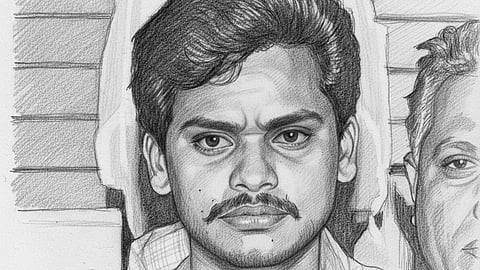
- Latest Legal News
- News
- Dealstreet
- Viewpoint
- Columns
- Interviews
- Law School
- Legal Jobs
- हिंदी
- ಕನ್ನಡ

Every now and then, a criminal case collapses not because the accused is proved innocent, but because the State fails the test of proving guilt lawfully. The Supreme Court’s judgment in Surendra Koli v. State of Uttar Pradesh is one such example - a verdict in a curative petition that quietly unravels what was once treated as a closed chapter.
For nearly two decades, Surinder Koli was a name that came to embody horror itself. The Supreme Court had upheld his death sentence in 2011, calling his crimes “rarest of rare.”
Fourteen years later, the same Court has recalled that decision and acquitted him. In doing so, it reminded the system that a conviction built on shortcuts does not amount to justice.
In December 2006, residents of Nithari in Noida discovered human remains behind a bungalow numbered D-5, owned by businessman Moninder Singh Pandher. The police claimed that Moninder Singh Pandher’s domestic help, Surinder Koli, had confessed to killing and dismembering several victims - mostly women and children - and disposing of their remains nearby.
Over the next weeks, thirteen FIRs were filed. The Central Bureau of Investigation (CBI) took over. The first trial concerned the disappearance of 14-year-old Rimpa Haldar.
In 2009, the trial court convicted Koli and sentenced him to death, relying mainly on his confession under Section 164 of the Code of Criminal Procedure (CrPC) and alleged recoveries under Section 27 of the Evidence Act. The Allahabad High Court confirmed the verdict. In 2011, the Supreme Court dismissed Koli’s appeal, calling him a serial killer and affirming the death penalty.
Justice, on paper, seemed to be done.
Between 2010 and 2021, twelve more cases were tried on the same evidence - the same confession, the same recoveries, the same witnesses.
By 2023, the Allahabad High Court saw what the first trial had overlooked. Koli had been in continuous police custody for nearly sixty days before he “confessed.” He had no meaningful access to a lawyer. The magistrate failed to confirm voluntariness of confession. The investigating officer, astonishingly, was present during the recording. The confession itself mentioned tutoring and torture.
The High Court ruled that the statement was not voluntary and, therefore, inadmissible under Section 24 of the Evidence Act. The recoveries too fell apart - there was no contemporaneous disclosure memo and the recovery site was already known to the police and the public. Forensics offered nothing: no blood inside the house, no matching DNA, no usable weapon trace.
All twelve convictions were set aside. The State appealed. In July 2025, the Supreme Court dismissed those appeals. The acquittals stood final.
The judicial system now found itself at a crossroads. The 2011 judgment affirming Koli’s conviction rested on the same evidence that had now been judicially discredited. Two opposite outcomes existed on one record - one condemning, one exonerating.
A Bench of Chief Justice of India BR Gavai and Justices Surya Kant and Vikram Nath confronted that paradox through a curative petition. Justice Nath wrote that when final orders of the Court “speak with discordant voices on an identical record, the integrity of adjudication is imperilled.”
The curative jurisdiction, he explained, exists not to reopen facts, but to correct a manifest miscarriage of justice. It is the Supreme Court’s constitutional duty to preserve the purity of its own process.
The Bench held that there was “no principled basis” to treat the confession as voluntary in one case and involuntary in twelve others. The same logic applied to the Section 27 recoveries. Once those were excluded, the chain of circumstantial evidence collapsed.
The Court recalled its 2011 judgment, quashed the conviction and ordered Koli’s release.
Beneath the judicial restraint, the message is unmistakable: this case failed because the investigation failed.
The Court listed the lapses with clinical precision - the crime scene was never secured, disclosure statements were contradictory, custody was prolonged without medical checks and forensic opportunities were wasted. Even the “murder weapons” showed no trace of human blood.
“Negligence and delay corroded the fact-finding process and foreclosed avenues that might have identified the true offender,” the Bench observed. It is a line that deserves to be written on the walls of every police training academy in India.
Because what collapsed here was not the idea of justice, but its execution. The police produced a confession under duress, staged recoveries in public view and built a case that could not withstand basic constitutional scrutiny. Once the foundation cracked, no court could save it.
The Bench did not ignore the gravity of the crimes or the anguish of the families.
“Criminal law does not permit conviction on conjecture or on a hunch. Suspicion, however grave, cannot replace proof beyond reasonable doubt,” Justice Nath said.
That distinction is the soul of Article 21. Justice must not only be done, but done properly. Article 14 demands that like cases be treated alike. The Court’s intervention was less an act of mercy than one of constitutional self-correction, ensuring the law does not contradict itself on the same facts.
The judgment ends with a quiet regret: despite years of investigation, the identity of the actual perpetrator “has not been established.” It is a line heavy with what it does not say.
If not Surinder Koli, then who killed the children of Nithari? The law has no answer. The evidence that might have provided one was lost to negligence, haste and the hunger for closure.
The Supreme Court has done what the police could not - restore legality and fairness to the record. But it cannot restore truth. The verdict frees a man, yet leaves a void that the law itself helped create.
And that, perhaps, is the hardest part of justice. Sometimes, doing it properly means accepting that it may never feel complete.